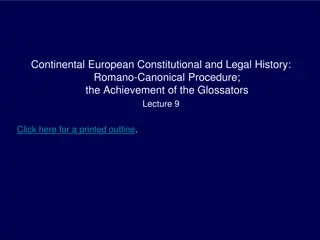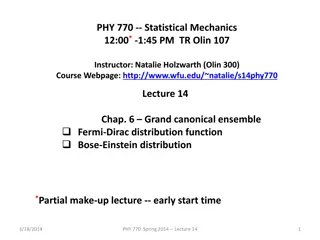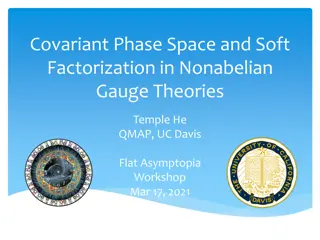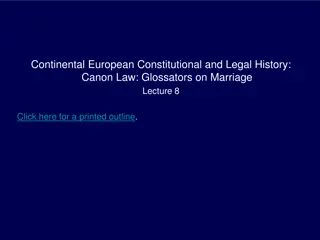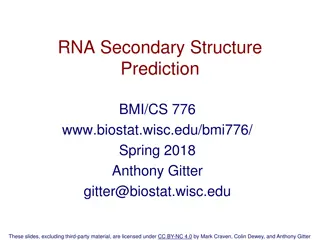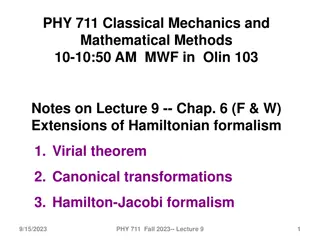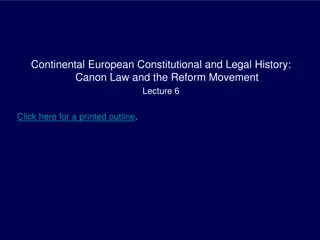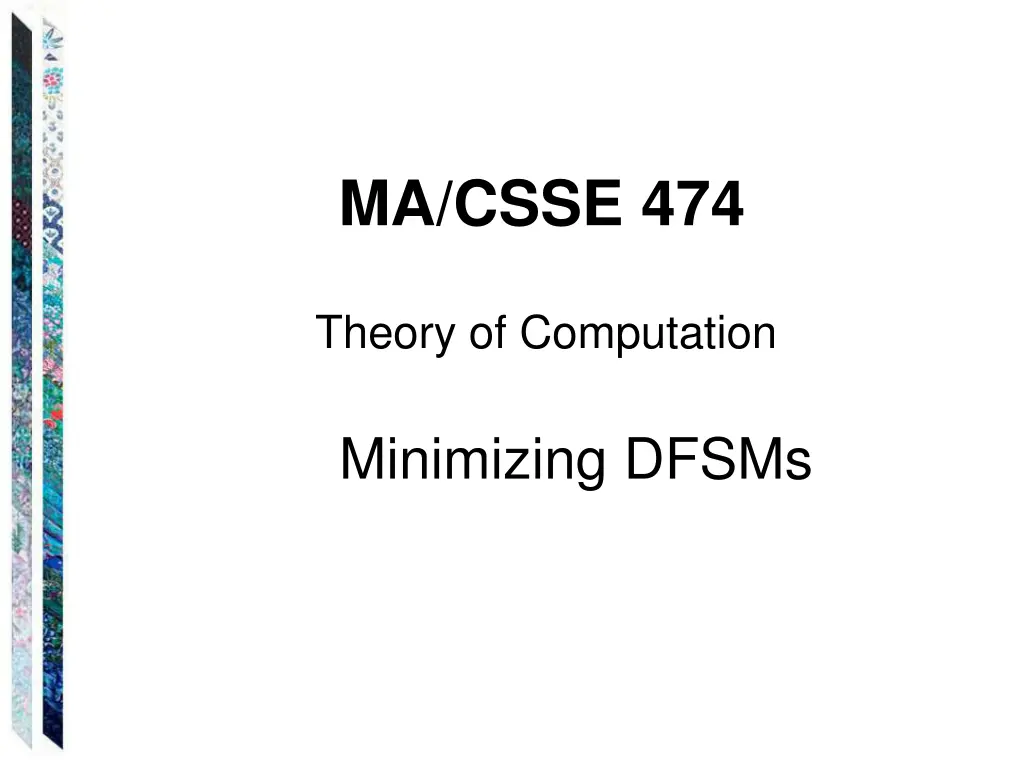
Theory of Computation: Minimizing DFSMs and Equivalence Classes
Explore the theory of computation concepts including minimizing deterministic finite state machines (DFSMs) and understanding equivalence classes in regular languages. Learn about the best we can do theorem and its implications for state optimization in DFSMs.
Download Presentation

Please find below an Image/Link to download the presentation.
The content on the website is provided AS IS for your information and personal use only. It may not be sold, licensed, or shared on other websites without obtaining consent from the author. If you encounter any issues during the download, it is possible that the publisher has removed the file from their server.
You are allowed to download the files provided on this website for personal or commercial use, subject to the condition that they are used lawfully. All files are the property of their respective owners.
The content on the website is provided AS IS for your information and personal use only. It may not be sold, licensed, or shared on other websites without obtaining consent from the author.
E N D
Presentation Transcript
MA/CSSE 474 Theory of Computation Minimizing DFSMs
Your Questions? Previous class days' material Reading Assignments HW4 or HW5 problems Tuesday's Exam Anything else Computer science Heap (data structure), a data structure commonly used to implement a priority queue Heap (programming) (or free store), an area of memory used for dynamic memory allocation Even in the relatively narrow area of Computer science, the term "Heap" is ambiguous. From Wikipedia:
Recap: Equivalent Strings (w.r.t. L) We say that two strings x and y are equivalent or indistinguishable with respect to a language L if, no matter what string z is appended to both, either both concatenated strings will be in L or neither will. Write it in first-order logic: x Ly iff z * (xz L iff yz L). Recall that x L y iff z * (xz L yz L).
Another Example of L = {a, b} L = {w * : |w| is even} a b aa bb aba aab bbb baa aabb bbaa aabaa The equivalence classes of L: Recall that x L y iff z * (xz L yz L).
Yet Another Example of L Do this one for practice later = {a, b} L =aab*a a b aa bb aba aab baa aabb aabaa aabbba aabbaa The equivalence classes of L: Recall that x L y iff z * (xz L yz L).
More Than One Class Can Contain Strings in L = {a, b} L = {w * : no two adjacent characters are the same} The equivalence classes of L: [ ] [a, aba, ababa, ] [b, ab, bab, abab, ] [aa, abaa, ababb ] [1] [2] [3] [4] Recall that x L y iff z * (xz L yz L).
One More Example of L = {a, b} L = {anbn, n 0} a b aa aba aaa aaaa aaaaa The equivalence classes of L: Recall that x L y iff z * (xz L yz L).
The Best We Can Do Theorem: Let L be a regular language and let M be a DFSM that accepts L. The number of states in M is greater than or equal to the number of equivalence classes of L. Proof: 1.Suppose that the number of states in M were less than the number of equivalence classes of L. 2.Then, by the pigeonhole principle, there must be at least one state q that contains strings from at least two equivalence classes of L. 3.But then M s future behavior on those strings will be identical, which is not consistent with the fact that they are in different equivalence classes of L.
The Best Is Unique Theorem: Let L be a regular language over some alphabet . Then there is a DFSM M with L(M)=L and that has precisely n states where n is the number of equivalence classes of L. Any other FSM that accepts L must either have more states than M or it must be equivalent to M except for state names. Proof: (by construction) M = (K, , , s, A), where: K contains n states, one for each equivalence class of L. s = [ ], the equivalence class under L that contains . A = {[x] : x L}. ([x], a) = [xa]. In other words, if M is in the state that contains some string x, then, after reading the next symbol, a, M will go to the state that contains xa.
Construct DFSM from L M = (K, , , s, A), where: K contains one state for each equivalence class of L. s = [ ], the equivalence class of under L. A = {[x] : x L}.[Aside: what is the union of all of these classes?] ([x], a) = [xa]. (if M is in state containing x, then, after reading the next symbol, a, it goes to state containing xa). Need to show: K is finite. L regular |K| #states of any M that accepts L, which is finite. is a well-defined function*. i.e. x,y *,a ([x]=[y] [xa]=[ya]) L = L(M). Before we prove this, we first show this lemma: lemma: r,t *( ([ ], rt) M* ([r], t)). We prove it by induction on |r|. Not much to do for the base case! * work with another student to prove this
Proof, Continued A smaller machine M# that also accepts L does not exist. Proof: This follows directly from our previous Theorem, which says that the number of equivalence classes of L is a lower bound on the number of states in any DFSM that accepts L. A different machine M# that also has n states and that accepts L does not exist. Proof: See p88 in the textbook if you are interested. It is straightforward but tedious, so due to lack of time we will not do it in class.
Example = {a, b} L = {w * : no two adjacent characters are the same} The equivalence classes of L: 1: [ ] 2: [a, ba, aba, baba, ababa, ...] 3: [b, ab, bab, abab, ...] 4: [bb, aa, bba, bbb, ...] (b )(ab)*a (a )(ba)*b the rest Equivalence classes become states Start state is [ ] Accepting states are all equivalence classes in L ([x], a) = [xa]









